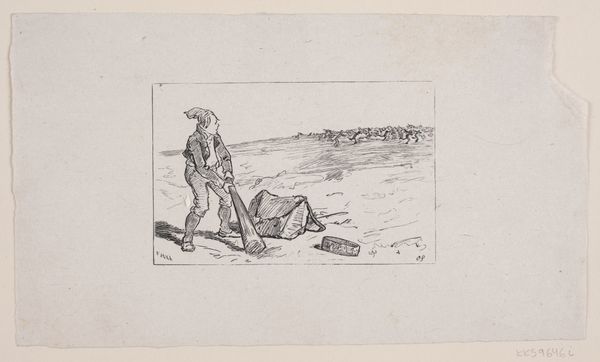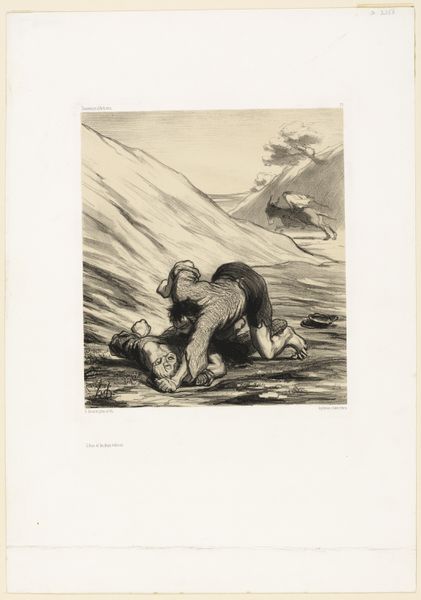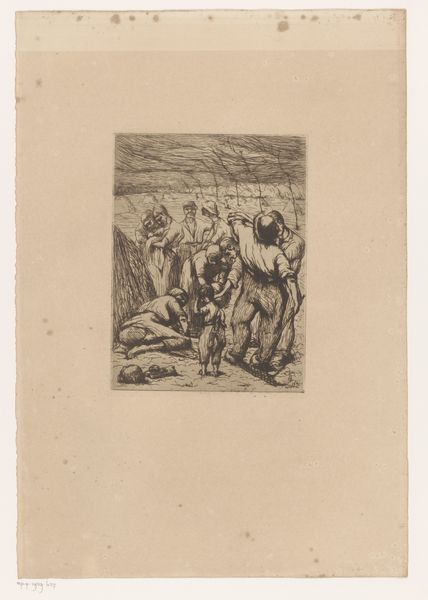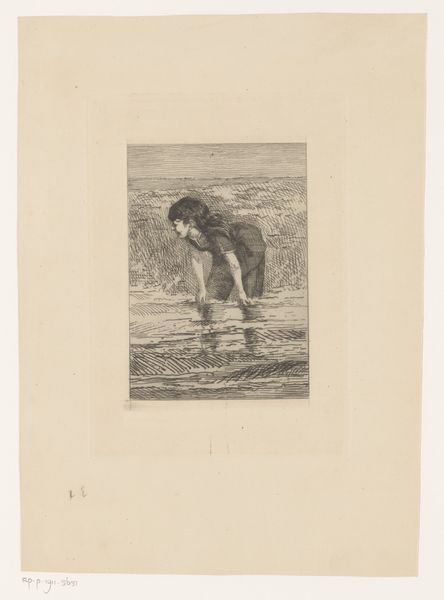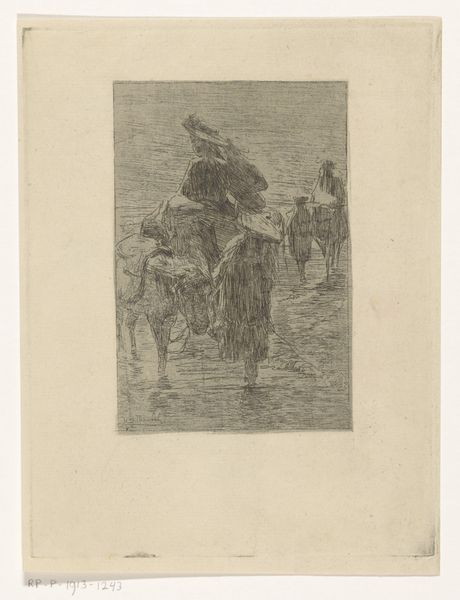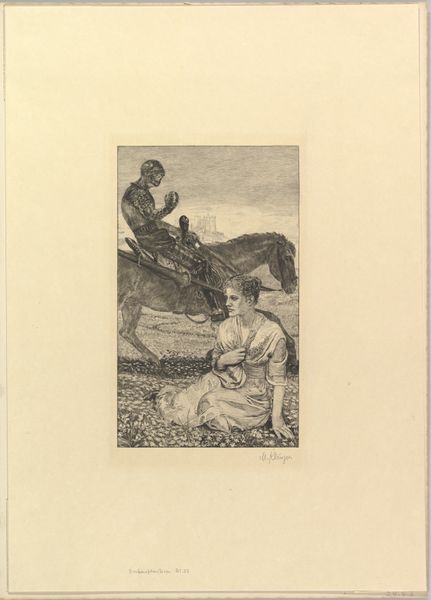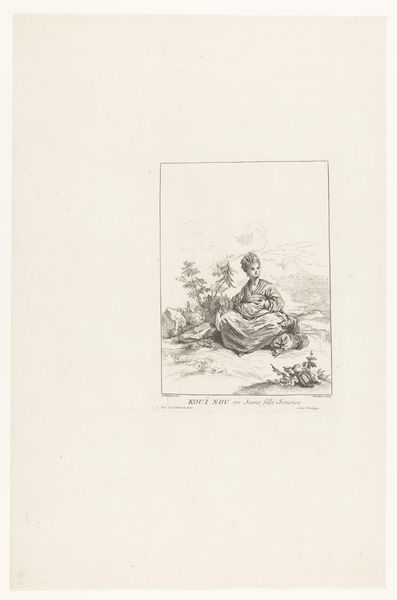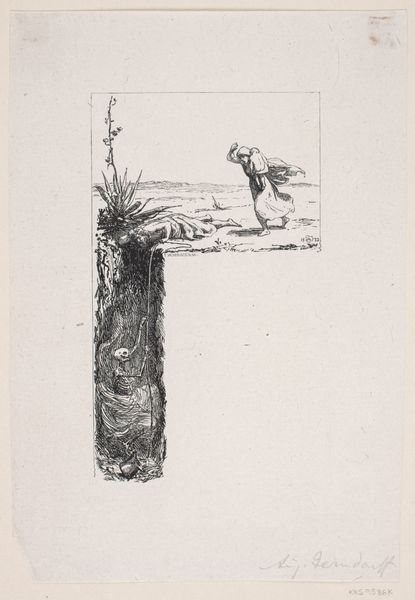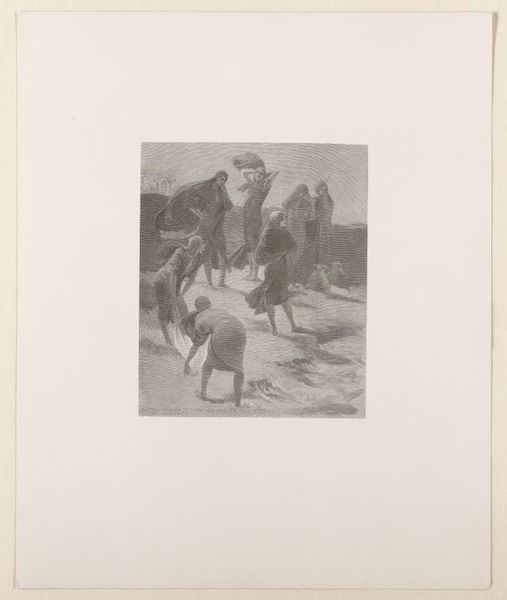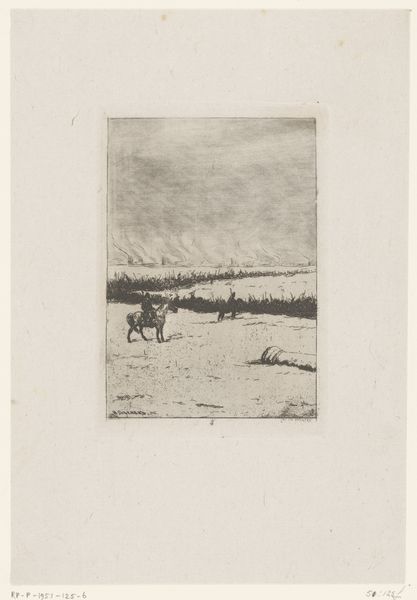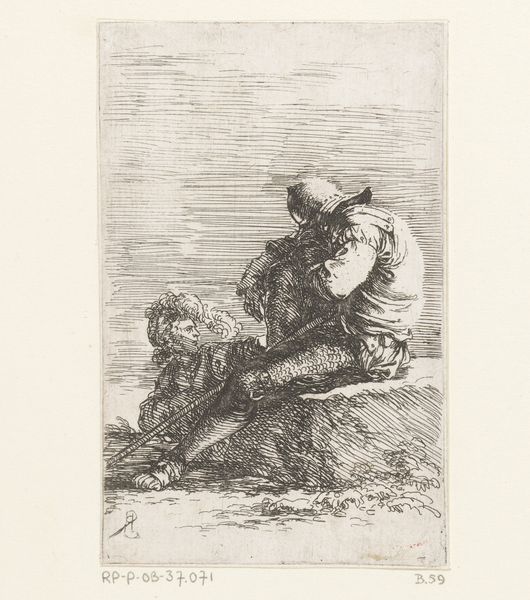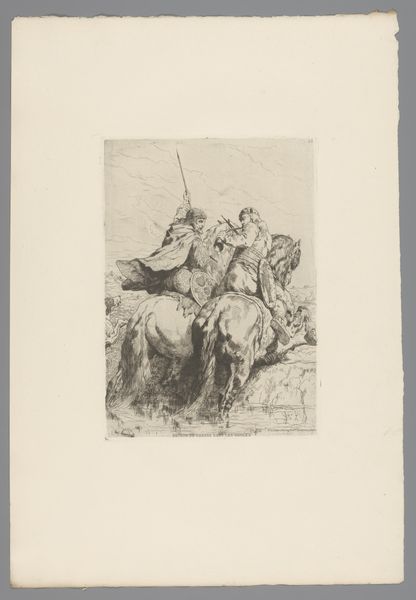
Dimensions: Image: 4 3/16 × 5 9/16 in. (10.7 × 14.1 cm) Sheet: 12 1/16 × 9 9/16 in. (30.6 × 24.3 cm)
Copyright: Public Domain
Editor: This etching, "The Diggers" by Jean-François Millet, was created sometime between 1830 and 1899. The stark lines create a sense of toil, almost desperation. What's significant about depicting such labor during this period? Curator: Well, Millet arrived on the scene during a tumultuous period in France, following the 1848 Revolution. The rise of Realism as an artistic movement was intimately linked to broader socio-political currents and new awareness of the working class. Artists were beginning to address the lives of ordinary people, rejecting the romanticized visions of the past. How does that make you feel when viewing this art work? Editor: It's thought-provoking. So, this isn't just about showing laborers, but about making a statement? Were his choices political? Curator: Exactly! It's not merely documenting, but elevating. This depiction of hard labor, of people bound to the soil, challenges the established hierarchies of the art world, and by extension, the social order. But what about its accessibility? How do you imagine it being displayed? Editor: I imagine something smaller in scale, making it more personal, rather than a grand statement in a huge gallery. I find this really humanizes labor. Curator: Precisely. Through pieces like this, Millet helped shift the public's gaze toward previously unseen realities, thus influencing what—and who—we consider worthy of representation in art. Editor: I see now, it really puts it into a political and social context and that art becomes accessible. Curator: Yes!
Comments
No comments
Be the first to comment and join the conversation on the ultimate creative platform.
